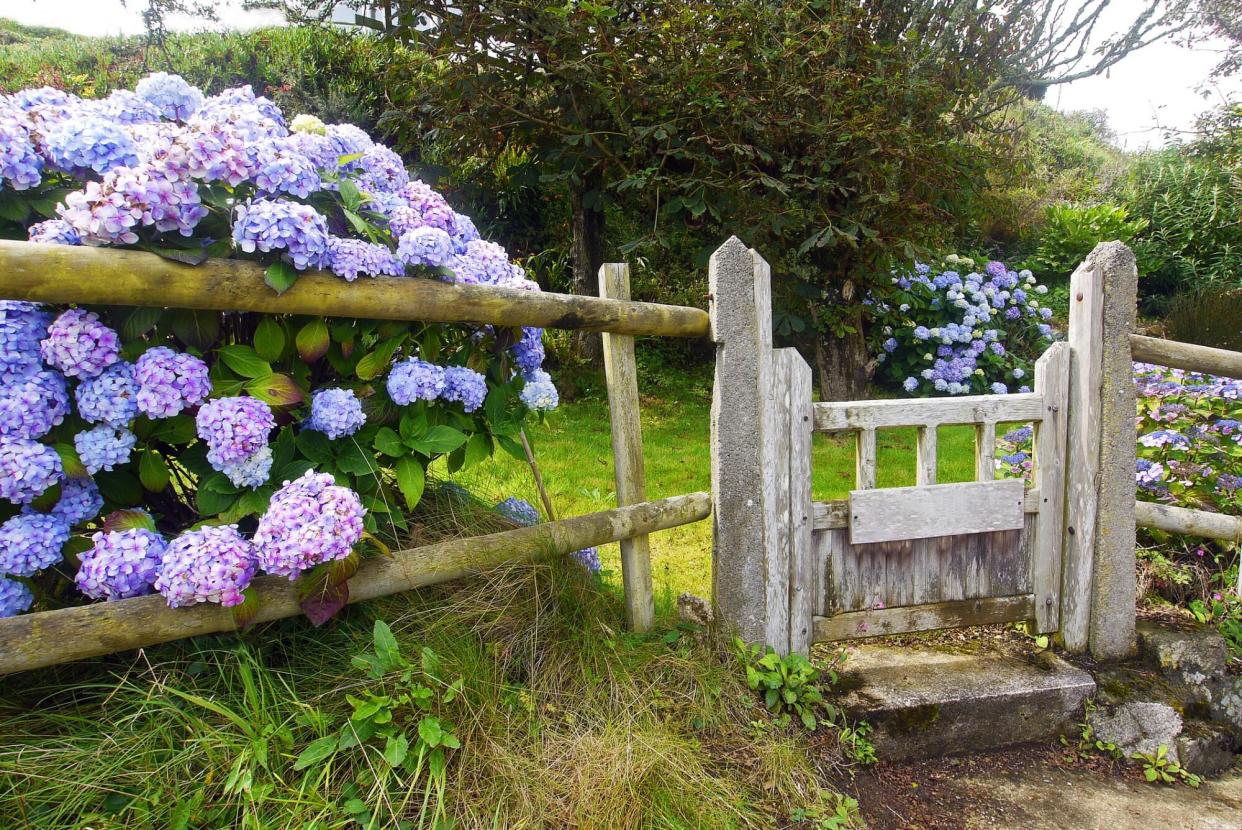If Your Hydrangeas Are Drooping, the Summer Heat Isn't the Only Culprit

Rosmarie Wirz/Getty Images
TABLE OF CONTENTS
On This Page
What Causes Hydrangeas To Droop?
Which Hydrangea Varieties Are Most Likely To Wilt?
Where to Plant Hydrangeas So They Don't Droop
How To Keep Hydrangeas from Wilting
There's nothing in the garden that can compete with the bright green foliage, dramatic blossoms, and overall glory of a hydrangea in full bloom. They're a siren of warm-weather days, long evenings on the porch, and daylight that lasts well past suppertime. But sometimes, their garden splendor might seem lackluster and a tad bit tired and droopy, with the onset of symptoms usually hitting around the same time every afternoon. It turns out, there's a reason (or maybe a few) as to why your hydrangea is getting a case of the blues like clockwork, but uncovering the cause isn't as simple as upping its water intake and hoping for the best. (Especially if your hydrangea in question is an oakleaf, a variety which is more susceptible to overwatering.) Is it the heatwave that's crushing much of the South right now or is it a case of too much sunlight? And what can be done once the symptoms set in?
To answer all these questions and more, we called on the expertise of the president of the Alabama Hydrangea Society, David Doggett, advanced master gardener with certification in hydrangeas. Here he shares everything you should know about wilted hydrangeas—and how to keep yours standing tall all summer long.
What Causes Hydrangeas To Droop?
Heat is only one part of the equation. If you're really looking to uncover why your hydrangeas are wilting, you need to consider the amount of water their leaves are releasing and the amount of water their roots are able to recoup.
"In this heat, hydrangeas—especially the blue/pink bigleaf or "French" hydrangeas—will transpire water vapor from their leaves faster than their roots can replace the water," says Doggett. "This causes the stems, leaves, and blooms to wilt or droop by late afternoon."
They'll start to show their fatigue once the true heat of the afternoon is in full swing. Doggett says the wilting isn't cause for alarm as long as they are able to rehydrate overnight and appear completely refreshed by the morning. "If the hydrangea still looks wilted the next morning, you need to increase your watering," he advises.
Which Hydrangea Varieties Are Most Likely To Wilt?
If you're considering adding hydrangeas to your landscape but want to avoid a wilted landscape, there are a few varieties that are more inclined to lose their pep. According to Doggett, the worst offenders are bigleaf hydrangeas (Hydrangea macrophylla). Both smooth hydrangeas and oakleaf hydrangeas are able to stand up to a bit more sun, but the real winner, as far as wilt-resistance goes, is the panicle hydrangea. "Panicle hydrangeas ('Limelight' is the most popular) need lots of sun (six or more hours) to bloom their best; give these plenty of sun and plenty of water," Doggett says.
Where to Plant Hydrangeas So They Don't Droop
To help protect your hydrangeas from drooping, plant them in a location that keeps them shielded from the afternoon sun. "Filtered sun, as beneath pines, is great," says Doggett. "Keep in mind that hydrangeas do need some sunlight in order to bloom well."
How To Keep Hydrangeas from Wilting
Droopy summer afternoons don't have to be inevitable. According to Doggett, there are certain things you can do to ensure your hydrangeas are prepared for the scorching afternoons, starting with shielding the soil to prevent it from getting too hot. "Pine straw or pine bark nugget mulch acts as a blanket to help cool soil temperature and it helps maintain moisture," says Doggett. He suggests two or three inches of mulch to get the job done. If you've provided the right conditions and watering for your hydrangea and still find it not to be flourishing, Doggett recommends waiting it out until fall and then replanting it in another location where it might be better suited.

